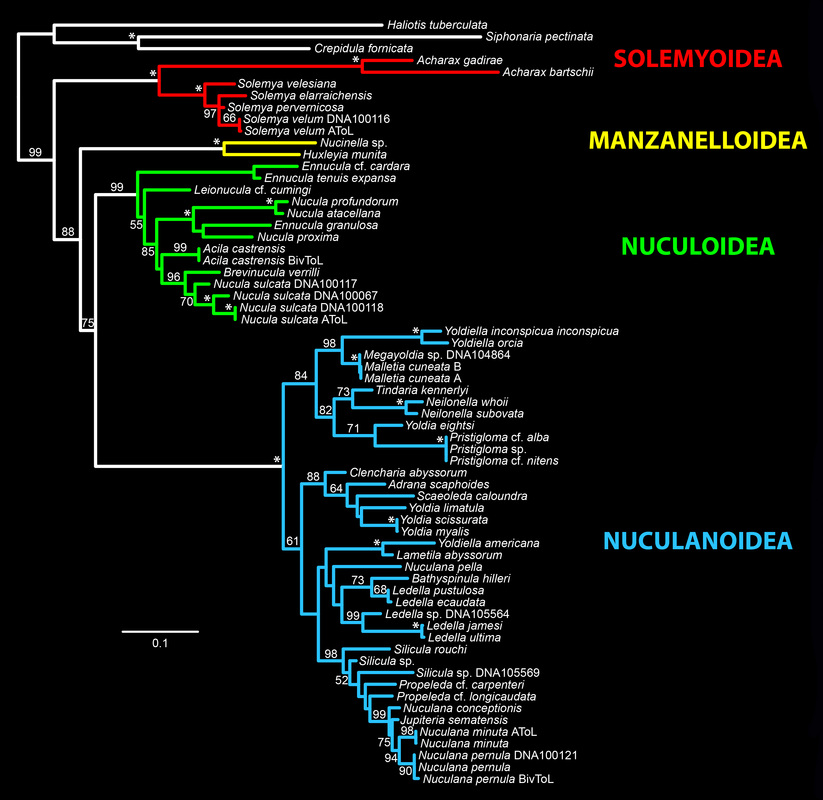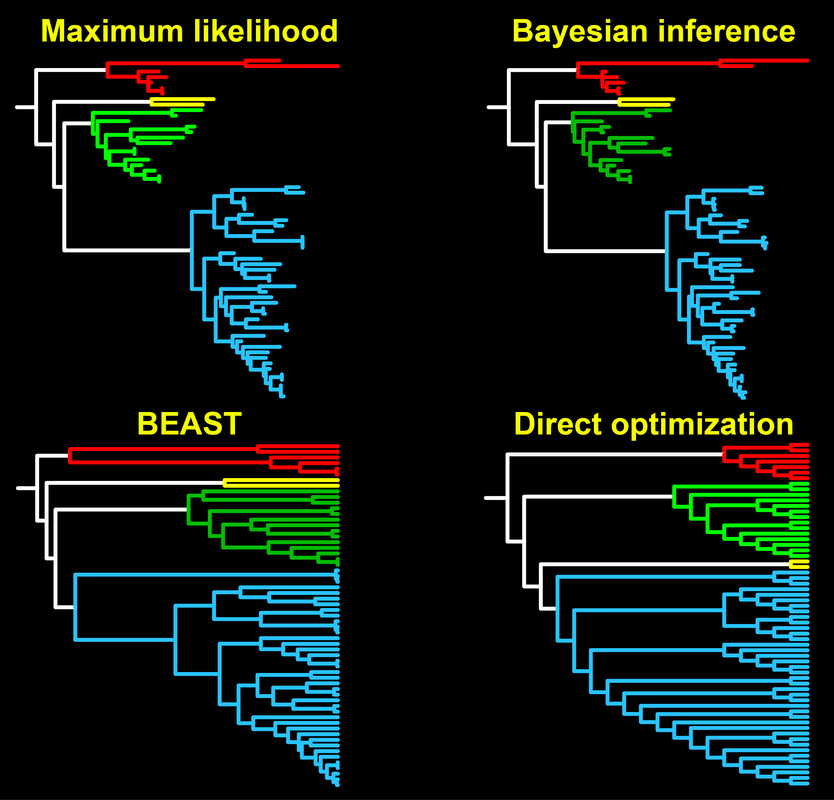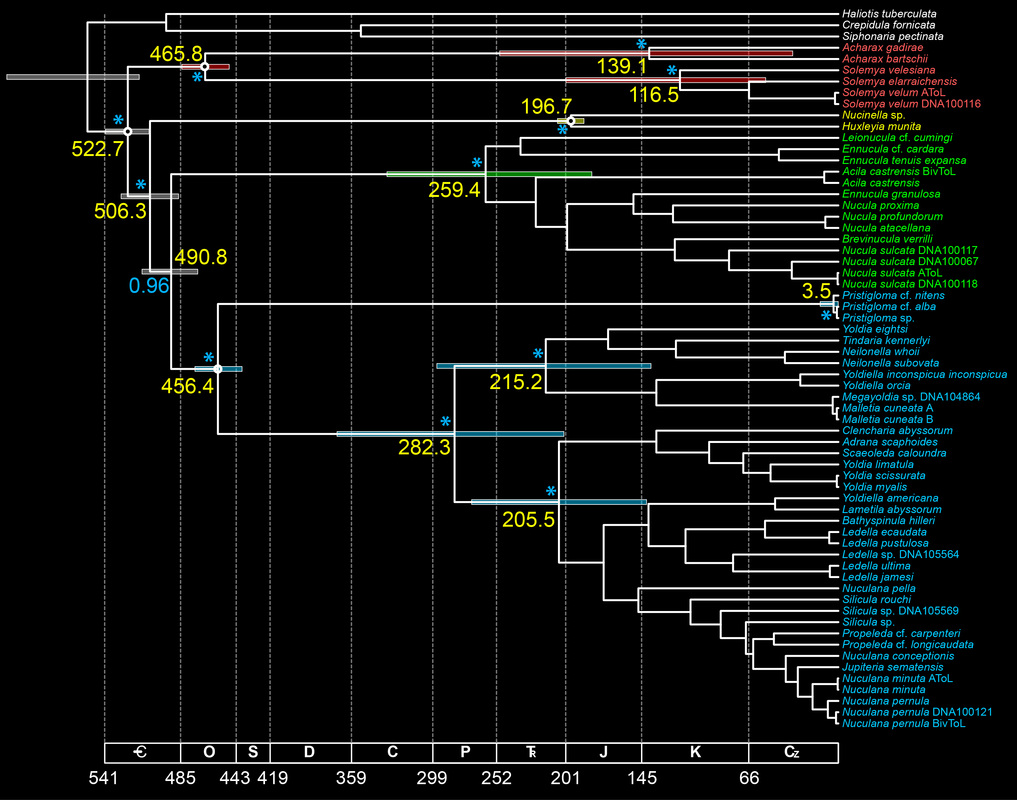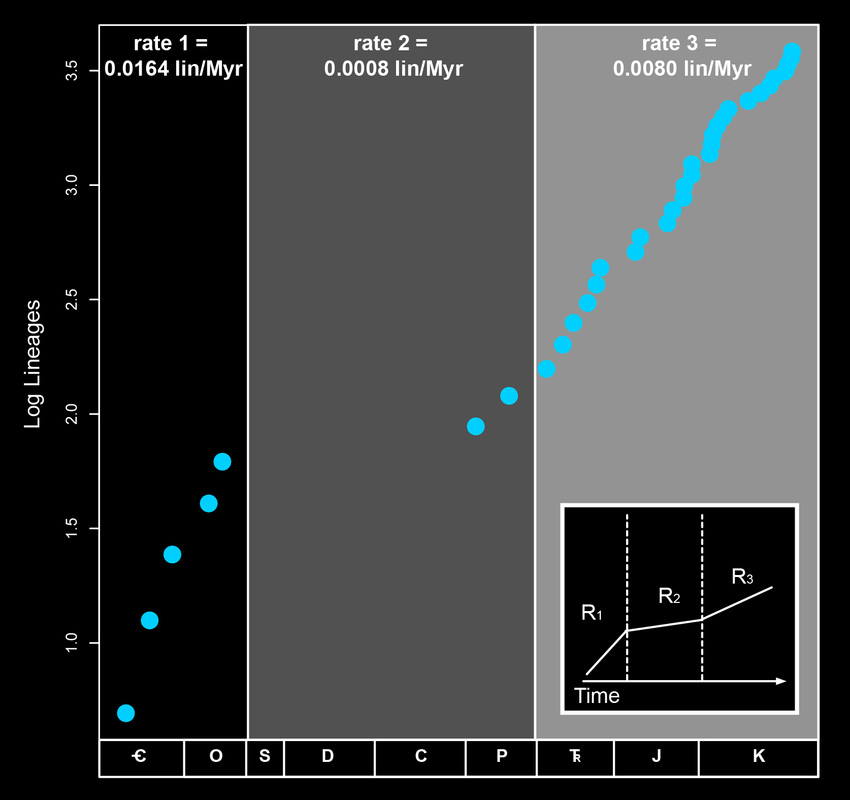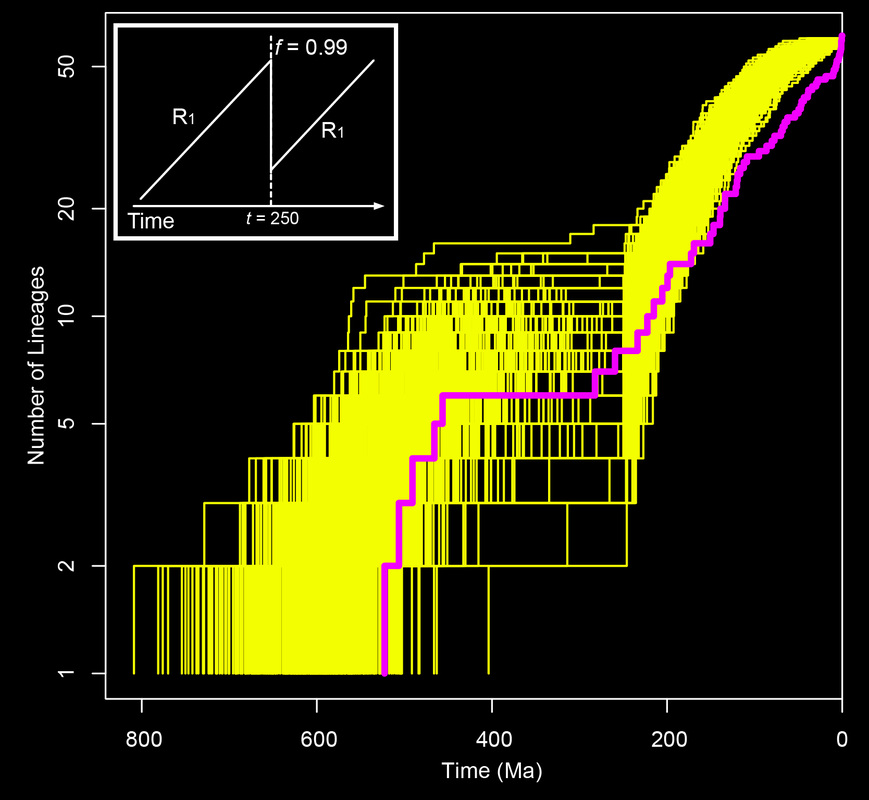Phylogeny of Protobranchia
Protobranchiate bivalves are among the most poorly understood molluscan groups, but among the most successful lineages in deep sea environments. These mollusks possess a protobranch gill that is not modified for filter feeding (in contrast to other bivalve) and a lecithotrophic pericalymma larva. Many lineages also bear sulfur-oxidizing bacterial chemosymbionts. Approximately 750 species are described and classified into five superfamilies.
Subsequent to several collecting efforts spanning nearly 12 years, we sampled for the first time representatives of all described protobranch bivalve families in a five-gene phylogeny.
The same four clades, indicated by the colors in the branches, are obtained under a variety of algorithmic approaches.
Molecular estimates of divergence times suggest a crown age in the early Paleozoic, with subsequent diversification of families occurring in the Mesozoic.
The log-lineage through time plot of protobranch bivalves has a marked anti-sigmoidal shape characteristic of a lineage radiating in the wake of a mass extinction. The timing of the upturn in diversification suggests that the phylogeny of protobranch bivalves has captured the signature of the end-Permian mass extinction. Shown in the inset of the figure below is the best fitting three-rate diversification model selected by LASER (Rabosky, 2006).
To test this hypothesis, we simulated 500 phylogenies undergoing a 99% extinction cull at time t = 250 (in yellow) and compared them to the empirical plot (in purple). These simulations demonstrate that the log-lineage through time plot of Protobranchia is indistinguishable from a model of constant net diversification rate, interrupted by the end-Permian event.


